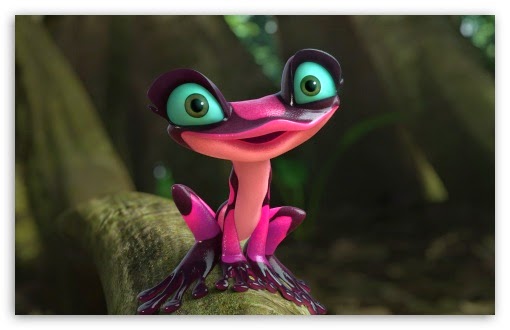Designing Rio2 with Color and Light by Tom Caldrone
He started his animation
career painting in backgrounds and is currently an Art Director.
Born in New York, USA, as an Art Director he has worked on Rio, Rio 2, Ice Age: The Meltdown and Dr. Suess: Horton Hears A Who.
His talk was focused on how to grab the audience's attention with the use of lighting and how that can assist with storytelling.
The first tip was to make sure you get the audience
to look where they should look on a screen, this is creating focus.
To create focus within a character, within a scene, across a
sequence or across the whole film there are logical decisions you need to make.
The style guide that was used from
Rio to Rio 2, the sequel was different, the first sequel was placed in the city, Rio
Janeiro, Brazil.
In the setting of Rio, the buildings
were mid-size to low rise buildings, the architectural influences were a mix of
french styles which inspired environment that was created for the characters.
They were also inspired by
patterns on the sidewalks in Rio and later looked into more patterns on
wallpapers to implement it into the forest environment for Rio 2.
Colours needed to be
brought into the forest so the palette used for the characters needed to be considered so the attention was not taken from them or the environment.
Colour keys were created to get an idea of the visual appearance of the scene to help with
lighting conditions.
Character Colour:
For designing the colour
for the character, you need to consider how it fits in the film as a whole.
The personality
unfolds as the film unfolds, the director knew how he wanted the character
'Gabi' to act and express herself. Gabi is a poisonous frog.
He wanted the colour for
Gabi to stand out from the background of the green forest, so she was made pink and
black, after much consideration of other colours, the eyes were made big and green.
Blue, the main
character was obviously made blue but on different areas on his body, the colour shades vary and this give more depth to the characters.
The Big Picture: When looking at the film from a wider point of view, you can create a colourscript for a film or
video and this helps to understand atmosphere that is being conveyed, there cannot be the same level of colour throughout the whole film as that does not affect the audience.
For the colour script of Rio 2, the rainforest colours were a mixture of shades of greens. In the film, when the trees
are being cut down in the forest, the colour changes to reds and browns to represent
danger, this is where you can influence the feeling of the film and also helps
to connote more meaning to scenes.
Staging: The lighting structure of the way a scene is
shot means you can direct the audience's attention to certain areas of the
screen. This could be to help drive the storyline or have them focus on important areas on the screen.
Theatrical
Lighting:
They tried to use certain techniques used in theatrical lighting to build
up to a climax and come down from one where it was needed. Spot lighting was used for the audition
scene in Rio 2 to make it a dramatic scene.
This talk was very interesting and one that I forward to, the first film was very entertaining, but learning about the techniques and factors they had to think about differently when making the second film was interesting.
I also learned that lighting plays a big role for how a scene is visually interpreted so this has made me more interested in llighting generally.





No comments:
Post a Comment